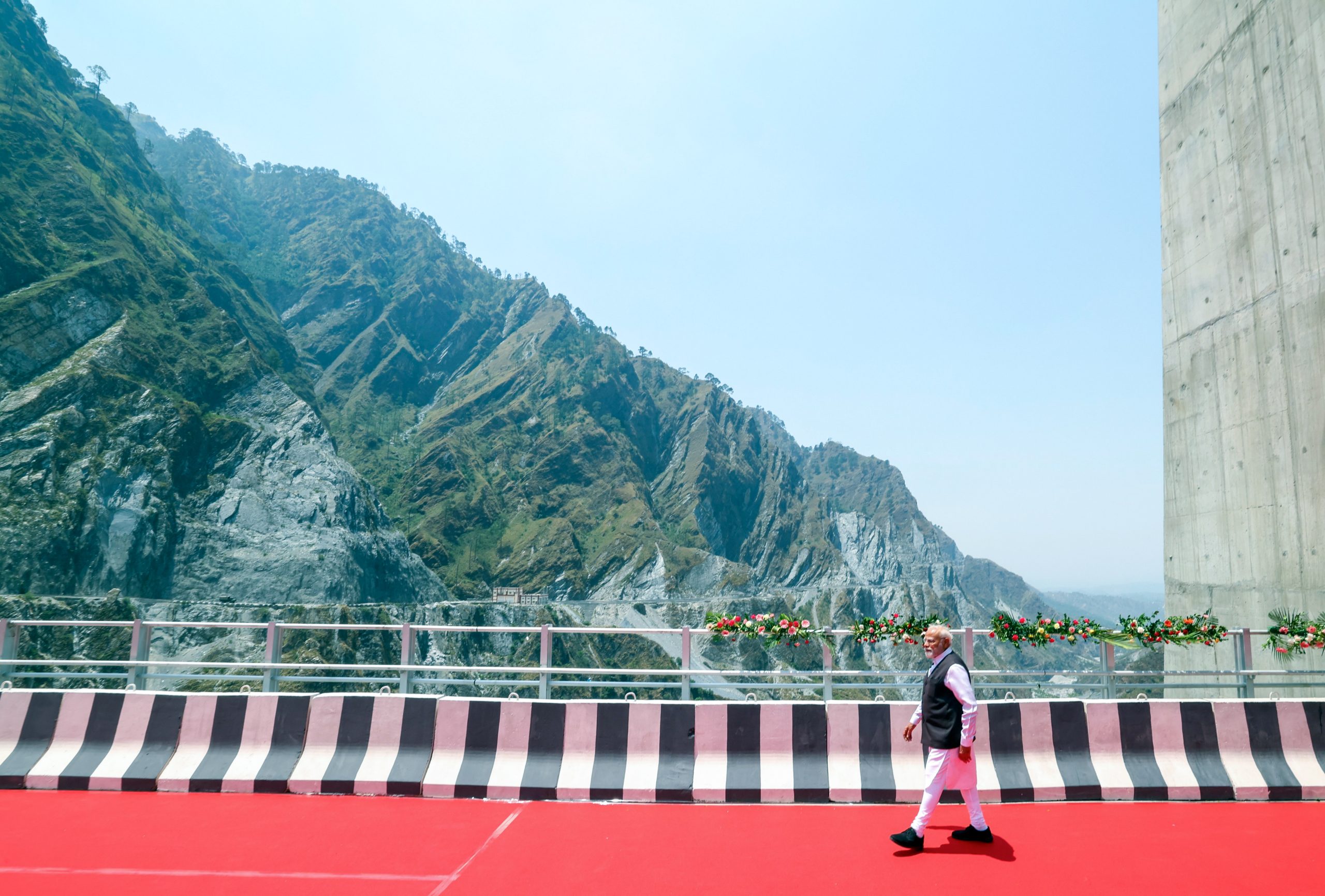In a landmark visit to Jammu and Kashmir, Prime Minister Narendra Modi on Friday flagged off new Vande Bharat trains and inaugurated two major railway bridges—the Chenab Rail Bridge and the Anji Khad Bridge—marking a pivotal moment in the region’s rail connectivity journey. The event highlighted more than a decade of sustained investment in railway infrastructure aimed at expanding access, improving mobility, and unlocking economic opportunity across the Union Territory.
The Chenab Rail Bridge, now recognised as the world’s highest railway arch bridge, towers 359 metres above the riverbed—rising 35 metres higher than the Eiffel Tower. Spanning 1,315 metres, this engineering marvel is a critical part of the Udhampur–Srinagar–Baramulla Railway Link (USBRL), one of India’s most ambitious transport projects. Designed to withstand extreme weather and seismic activity, the bridge is built to endure wind speeds of up to 260 kilometres per hour and has an expected lifespan of 120 years. Structural steel capable of withstanding temperatures from minus 10 to 40 degrees Celsius and cutting-edge Tekla software for structural precision were used in its construction.
Nearby, the Anji Khad Bridge stands as India’s first cable-stayed railway bridge. Stretching 725 metres across the Anji River valley and supported by 96 high-tensile cables, the bridge is anchored by a 193-metre-tall inverted Y-shaped pylon. Set against the dramatic Himalayan landscape, the structure was completed in a record time of 11 months. Over 8,200 metric tonnes of structural steel were used in its construction, making it a resilient and strategic link in the Katra–Banihal section of the USBRL. The bridge has been engineered to withstand tremors, high wind loads and shifting topography, providing a vital connection in a region marked by seismic and geological volatility.
The rail network in Jammu and Kashmir has undergone a radical transformation over the past 11 years. Once hindered by geography and conflict, the region’s integration into the national railway grid is now nearly complete. The USBRL project, which cuts across 272 kilometres of rugged Himalayan terrain, includes 36 tunnels spanning 119 kilometres and 943 bridges that connect isolated communities. Constructed at a cost of ₹43,780 crore, it represents one of the most challenging infrastructure undertakings in India’s post-independence era.
To maximise the benefit of this enhanced connectivity, the Vande Bharat Express will soon operate between Jammu and Srinagar. Designed for sub-zero conditions, the train is equipped with heated windshields, insulated toilets and advanced heating systems to withstand temperatures as low as minus 20 degrees Celsius. A snow removal train will operate ahead of it during harsh winters, and seismic dampers have been installed to ensure safety along the route.
The journey between Katra and Srinagar, which previously took more than five hours, will now be reduced to approximately three, a shift that is expected to bring substantial gains in tourism, trade and accessibility. Full electrification of railway lines in the region further strengthens this transformation, aligning with broader goals of energy efficiency and sustainability.
In addition to new services and engineering breakthroughs, the government has focused on modernising stations and expanding pilgrimage routes. In 2014, the commissioning of the Udhampur–Shri Mata Vaishno Devi Katra rail section opened a 25.6 km link built at a cost of ₹1,132.75 crore. It features 10.9 km of tunnels, 36 bridges and a modern Katra station, constructed with dedicated facilities including public conveniences and a footbridge for local residents. That same year, the Shri Shakti AC Superfast Express was introduced to connect New Delhi with the shrine town, enhancing accessibility for pilgrims.
More recently, in February 2024, a 48-km stretch between Banihal, Khari, Sumber and Sangaldan was inaugurated, along with the electrification of the 185.66-km Baramulla–Srinagar–Banihal–Sangaldan section. Prime Minister Modi flagged off the valley’s first electric train, marking a shift towards cleaner and more efficient rail operations. The Banihal–Sangaldan section features ballast-less tracks to ensure smoother rides.
In January 2025, Indian Railways conducted safety inspections on the 111-km Banihal–Katra section, featuring 97 km of tunnels and four major bridges. Once operational, this will complete the Jammu–Srinagar rail link. Jammu station is also being redeveloped to include eight platforms and upgraded passenger amenities. A dedicated railway division with headquarters in Jammu was created in the same month, carved out from the Ferozepur Division. It will oversee operations in Jammu and Kashmir, Ladakh, Himachal Pradesh and parts of Punjab, enhancing administrative efficiency and service delivery.
The T-50 tunnel, a 12.77-km stretch connecting Khari and Sumber, is now the longest transportation tunnel in India and plays a critical role in the USBRL network. Constructed using the New Austrian Tunnelling Method, the tunnel includes a parallel escape tunnel and cross-passages every 375 metres for safety. Extensive geological challenges were met with strategic engineering solutions, including the construction of multiple adits to fast-track completion. The installation of CCTV cameras every 50 metres, monitored from a central control room, ensures operational safety.
To support these developments, Indian Railways also laid 215 km of approach roads to ensure access to remote construction sites. These roads have brought ancillary benefits by improving rural connectivity and enabling economic activity in previously inaccessible areas.
As part of its broader modernisation strategy, the Ministry of Railways has included four Jammu and Kashmir stations—Budgam, Jammu Tawi, Shri Mata Vaishno Devi Katra and Udhampur—under the Amrit Bharat Station Scheme. This initiative aims to deliver enhanced passenger services and drive integrated urban development.
In the Union Budget for 2025–26, the Centre allocated ₹844 crore specifically for railway development in Jammu and Kashmir. The funding is aimed at accelerating ongoing projects and strengthening rail infrastructure across the region.
The confluence of infrastructure upgrades, strategic investments and technical innovation over the past decade is reshaping Jammu and Kashmir’s transport landscape. The region, once isolated by mountains and weather, is now poised to emerge as a vital link in India’s national rail network, offering faster, cleaner and more inclusive mobility for its people.














